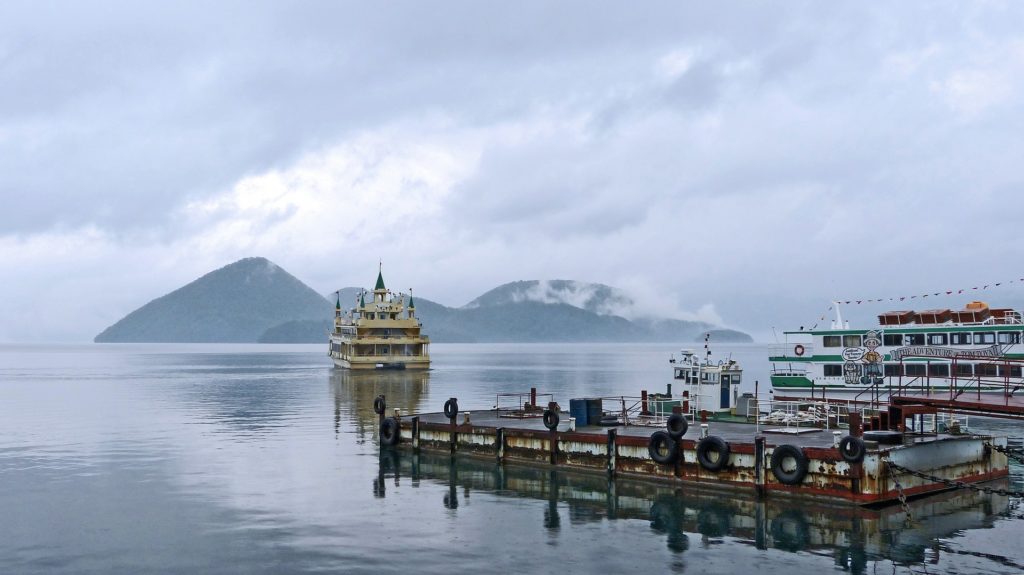
Hokkaido is the northernmost and second largest island of Japan. Because of its location, it experiences extreme weather conditions in the winter season, with temperatures dipping below zero degrees Celsius and tons of snowfall. In the summer, it is not as hot and humid as the rest of the country, so it is a popular destination for those looking to escape the unbearable heat and humidity on Honshu Island and the other parts of the country.
How To Get There
The New Chitose Airport in Sapporo is the region’s primary airline hub. It operates numerous international and domestic flights on a daily basis. Airline companies that fly to and from there include international carriers like Air China, Cathay Pacific, Hawaiian Airlines, Thai Airways, Singapore Airlines, and United Airlines, and domestic carriers like Air Do, All Nippon Airways, Japan Airlines, Peach, Skymark Airlines, and Vanilla Air.
Other airports in Hokkaido that provide easy access to the island’s many attractions are Wakkanai Airport in Wakkanai, Asahikawa Airport in Asahikawa, Nemuro Nakashibetsu Airport in Nakashibetsu, Kushiro Airport in Kushiro, and Memanbetsu Airport in Memanbetsu.
Hokkaido also has a reliable railway network for intercity travel operated by the Hokkaido Railway Company or JR Hokkaido, which manages that Hokkaido Shinkansen that runs from Aomori, which is the northernmost point of Honshu Island, and Hakodate. Check out Hokkaido Railway Company’s official website for more information.
Top Attractions
Daisetsuzan National Park
The largest national park in Hokkaido, the Daisetsuzan National Park is a gorgeous mountainous and densely-wooded area that is home to some of the country’s most exotic wildlife. It is a great place for nature lovers and adventure seekers, as the park offers excellent views of the unspoiled scenery and a long list of outdoor activities to enjoy.
- Asahidake Onsen – A small onsen town found at the foot of Mount Asahidake, which is the highest mountain in Hokkaido, Asahidake Onsen is frequently used as the starting point of visitors who want to explore the national park. It has a few shops, restaurants, hotels, a hostel, and a tourist information centre. It is also where you can find the lower station of the Asahidake Ropeway, which takes visitors to the upper station on Mount Asahidake, approximately 1,600 metres above sea level.
- Mount Asahidake – The highest mountain on the island of Hokkaido, Mount Asahidake offers various hiking trails and fantastic views of the volcano. If you take the Asahidake Ropeway from Asahidake Onsen up to the mountain, you only have to hike about two more hours to reach the summit. There is also a trail that loops around the Asahidake Ropeway upper station, and takes less than an hour to complete. Make sure to visit Asahidake Ropeway’s official website for access, tickets, timetables, weather, and other information.
- Sounkyo Onsen – Another small onsen resort in the Daisetsuzan National Park, Sounkyo Onsen is a beautiful and scenic town that offers access to Mount Kurodake. It has several onsen bath houses and waterfalls, and is among the island’s most popular autumn foliage viewing spot.
Shiretoko National Park
A vast, well-preserved, and untouched natural green space in the eastern portion of Hokkaido, the Shiretoko National Park is recognized as one of Japan’s most stunning and breathtaking natural wonder. It is home to a variety of wild flora and fauna, and is popular for drift ice during the winter season.
- Utoro – Utoro is a town that serves as the entry point to Shiretoko National Park. It has an abundance of natural onsen waters, so it offers several ryokan and baths for visitors who want to relax and unwind. It is known for the many huge rocks found on its shores, most particularly the 60-metre high Oronko Rock, which has a trail up to the top that provides panoramic views of the town and its surroundings.
- Drift Ice – Shiretoko National Park’s northeastern coast sees a lot of drift ice during winter season. Around January, these drifting sea ice that come from Russia come into view on the coast, and become a major tourist draw up until before they disappear in April. There are different drift ice tours offered during this season, including walking on ice, swimming in ice, and drift ice boat tours.
Wakkanai
Wakkanai is the northernmost city of Japan. It is home to the country’s northernmost point, known as Cape Soya, and numerous nature and environment related attractions, such as Wakkanai Youth Science Center, Noshappu Cold Water Aquarium, Lake Onuma Bird Observatory, Harbour Seal Observatory, and Breakwater Dome.
Lake Toya
Lake Toya is an attractive lake belonging to the Shikotsu-Toya National Park. It is located close to Mount Usu, an active volcano that last erupted in 2000, so it offers numerous relaxing hot springs and incredible nature views and activities.

Kushiro Shitsugen
Kushiro Shitsugen is a national park in Hokkaido that contains the largest marsh and wetland area in the country. It serves as home to the endangered Japanese cranes, and provides various opportunities for hiking, bird watching, and other outdoor nature activities.
- Akan International Crane Centre – A sanctuary and breeding centre for the endangered Japanese cranes, the Akan International Crane Centre is a good place to visit to learn more about the cranes in Japan.
- Crane Feeding Stations – If you want to watch the Japanese cranes being fed, check out Tancho Observation Centre, Tsuruimidai, and Tsurui Ito Tancho Sanctuary.
- Marshland Viewing Points – To get magnificent views of the immense landscape of the national park, it is highly recommended to visit Kushiro Shitsugen Viewpoint, Hosooka Viewpoint, and Hokuto Viewpoint.
Visit the Kushiro City official website for various resources with information on Kushiro Shitsugen.
Getting Around
Travelling to the different cities in Hokkaido is possible via trains and buses. You can find out more about intercity travel in Hokkaido by trains here and by buses here.
However, it is not uncommon for some spots to only be served by infrequent trains and buses (or none at all), so rental cars are a good way to go.
Airports and train stations usually have rental car booths where you can pick up a vehicle once you are in Hokkaido. It is also possible to search for rental car companies or reserve online before your arrival through websites such as Rakuten and Ren@Navi.
Weather
Summer in Hokkaido is generally cool, with temperatures between 15 and 25 degrees Celsius. However, it sees a lot of rainy days, especially in August and September. In winter, expect a lot of snow from as early as November. Its coldest month is January, when the average daily temperature is -4 degrees. In spring and autumn, the temperatures fall between 5 and 10 degrees.
